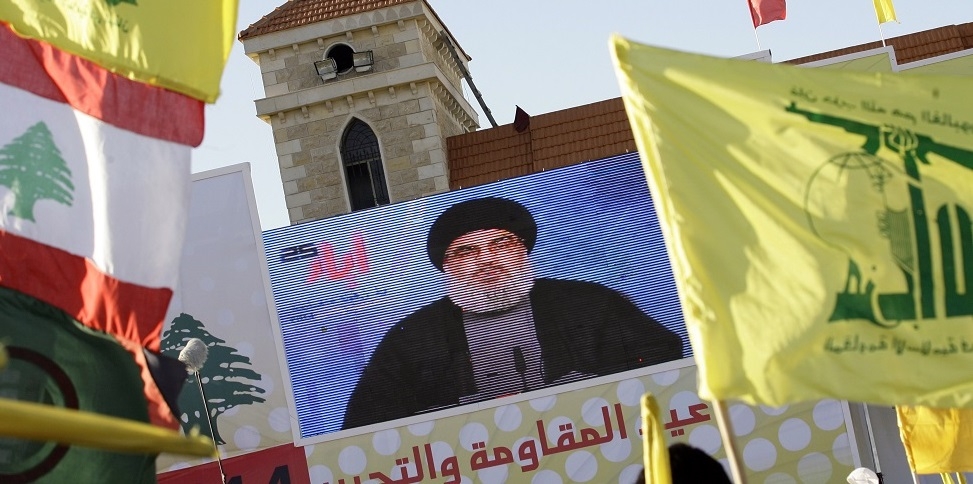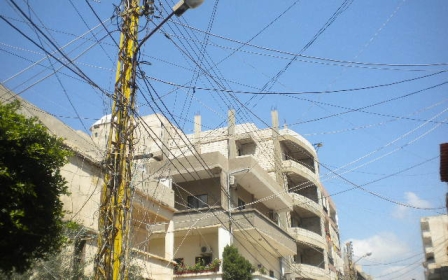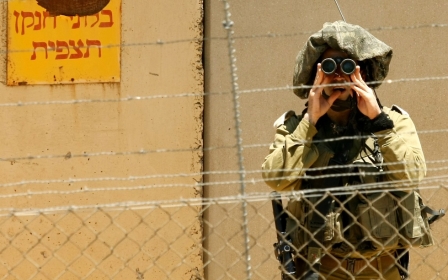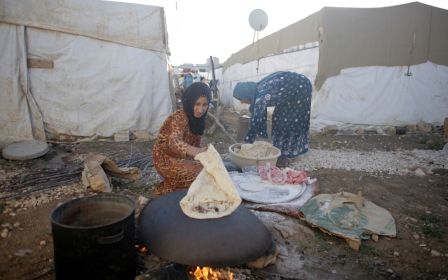
Homage to Bint Jbeil
In July and August of 2006, the Israeli military pummeled Lebanese territory for 34 days, killing approximately 1200 people. Most were civilians. Other casualties of the onslaught included bridges, highways, homes, farmland, power plants, factories, UN observation posts, and a variety of non-human organisms; as Oxfam reported at the time, “initial estimates put livestock loss at one million poultry, 25,000 goats and sheep, and 4,000 cattle.”
Shortly after the end of the bloody affair, a friend and I embarked on a hitchhiking tour of Lebanon that lasted for several months and transformed our conception of what constituted a normal landscape. When we subsequently crossed into Syria and then Turkey, intact infrastructure seemed suddenly aberrant. Villages that hadn’t been reduced to rubble looked out of place.
A main epicentre of Israeli destruction in Lebanon was the south Lebanese town of Bint Jbeil, situated four kilometers from the Israeli border and occupied by the Israel Defense Forces for 18 years until the IDF was forced to withdraw in May 2000. Bint Jbeil’s recent history reveals much about why the Israelis were so intent on flattening it.
To be sure, the town’s strategic location and topography make it attractive to any would-be conqueror; its surrounding hills offer commanding views of south Lebanon, which, as the Israelis know quite well from their adventures in occupation, come in handy when one is seeking to exert one’s control over the area.
But more importantly, Bint Jbeil holds the distinction of being known as the “capital of the Resistance,” having hosted the post-Israeli withdrawal speech by Hezbollah Secretary General Hassan Nasrallah in which he famously referred to the enemy as “weaker than a spider’s web,” despite its formidable military arsenal.
Apparently, Israel had still not recovered from this insult six years later, and the assault on Bint Jbeil during the July war was christened “Operation Web of Steel.” A July 2006 Jerusalem Post article citing Israel’s personalised nickname for the town - Hezbollah's “terror capital” - quoted a high-ranking Israeli officer on the IDF’s war aims: “This is not just about killing Hezbollah fighters, but it is about destroying the organisation's symbols of pride.”
Historian David Hirst confirms in his book Beware of Small States: Lebanon, Battleground of the Middle East: “Chief of symbols was Bint Jbeil”. According to IDF calculations, the town was to be taken in 48 hours starting on 24 July, and an Israeli flag was to be raised in consummation of the symbolic re-conquest.
So how did the whole “web of steel” thing pan out?
“Hell on earth”
Hirst details the sequence of events relating to the battle of Bint Jbeil, which can be summarised as follows:
After 10 days spent bombarding Lebanon, the IDF declared on 22 July that the Lebanese border village of Maroun al-Ras, just to the south of Bint Jbeil, had been taken. It quickly became clear that Maroun al-Ras had not in fact been taken. The IDF proceeded anyway with its advance on Bint Jbeil, declaring that town taken on 25 July. It quickly became clear that this, too, was not the case.
In a physical showdown between IDF soldiers and Hezbollah guerrillas, the latter proved themselves “well placed to minimize their enemy’s technological advantages in a battle of ‘rifles, teeth and fingernails’” - the description offered by Israeli journalists Amos Harel and Avi Issacharoff in their book 34 Days: Israel, Hezbollah, and the War in Lebanon.. Israeli troops later referred to the encounter as “hell on earth.” Eight Israelis were killed, after which Bint Jbeil - along with Maroun al- Ras - were “seared into Israeli consciousness… as painful emblems of Israel’s war now going wrong on the ground.” So much for the intended symbolic reversal.
In the meantime, the Israeli war effort in general was characterised by military and political bickering and miscommunication, conflicting battle orders, strategically useless escapades, and an astonishing level of unpreparedness. Hirst writes that many reservists “either headed to the front with hardly any of their combat gear because of shortages in the quartermasters’ stores, or bought what they needed with their own money.”
The war ended on 14 August, after Israel had saturated south Lebanon with as many as 4.6 million cluster bombs - a sizable percentage of which didn’t explode on impact and were left to be stumbled upon by farmers and children, thus ensuring that the Israeli military could continue to kill without being physically present. Obviously, none of Israel’s wartime technical mismanagement had impeded its capacity for massive slaughter, but Nasrallah took advantage of the opportunity to brand Israel’s non-victory a “divine victory” for the Resistance.
Last month I visited a Hezbollah fighter in Bint Jbeil, a veteran of the 2006 war, who took me around to key battle sites on the outskirts of the town (“only their bombs made it to the town centre,” he said with a slight laugh). As we drove up the hill from Bint Jbeil to Maroun al-Ras to inspect the view of “Occupied Palestine” - as it is denoted on south Lebanese road signs - he offered his philosophy regarding the Israeli need to regularly rain ruin upon Lebanon: “If you give cowards weapons, they’re going to use them.”
He then embarked on a list of Bint Jbeil-related trivia, which culminated with the pronouncement: “America is ours.” Before any neoconservative paranoiacs get their panties in a bunch, let me clarify that he was making a joke about the disproportionate number of Bint Jbeilians residing in Dearborn, Michigan.
A different version of “hell on earth”
Incidentally, the first family I met in Bint Jbeil during my post-war hitchhiking excursion in 2006 was one that had recently repatriated itself from Dearborn to Lebanon. My traveling companion and I were exploring the town on foot - consulting an unexploded munitions chart with every step - when we were invited in for coffee by a man painting over bullet holes in his front door.
Once we had been seated with the man’s wife and three children in the living room, his 13 year-old daughter, Maryam recounted the family’s war experience, which had consisted of not sleeping for 10 days while huddled in a basement with a host of relatives and neighbours, expecting to be annihilated at any moment. Chances of annihilation became even greater when her grandfather suffered a heart attack and had to be rushed to the hospital during heavy aerial bombardment.
The family had not pursued the option of evacuation by the US government, as the non-citizen grandparents were not eligible. (At first the US attempted to charge folks for being evacuated, with concern for its citizenry further underscored by mid-war rush shipments of bombs to Israel. These were apparently meant to expedite the “birth pangs of a new Middle East” - then-Secretary of State Condoleezza Rice’s sensitive characterisation of the carnage in Lebanon.)
They eventually escaped north in a vehicular convoy, the last component of which was eliminated by an Israeli missile, illustrating the conundrum posed by Israel’s evacuation orders to south Lebanese civilians on the one hand and its attacks on fleeing vehicles on the other. Maryam expressed her earnest hope that US media had not covered the extent of the summer tragedy in Lebanon for fear that it would have caused the American public undue pain.
Maryam’s four-year-old sister, meanwhile, spent the duration of our visit recoiling at the smallest sound - behavior that my friend and I began to emulate upon learning that there was an unexploded bomb measuring over half a meter in length in the unoccupied house next door.
The family’s story was not unique. In The War on Lebanon: A Reader, edited by Nubar Hovsepian and with a foreword by Rashid Khalidi, Hiam Turfe-Brinjikji offers a similar account of the war in a piece titled, “A Fateful Visit to Lebanon: a Diary.” Returning to her native Lebanon from Michigan after 32 years, Turfe-Brinjikji arrived with her children just in time for the Israeli onslaught. The first Israeli missile launched on Bint Jbeil (on 13 July) landed less than 100 metres from them, and she counted 70 incoming missiles in the first three hours alone.
Prior to escaping to Syria, Turfe-Brinjikji witnessed an Israeli attack on a rescue-and-recovery crew, learned of an attack on men attempting to inter bodies at the cemetery, and observed: “We couldn’t understand why Israel was targeting civilian areas when the Hezbollah rockets were clearly being launched from non-residential open fields in the distance.”
Turfe-Brinjikji’s grandmother and aunt remained behind in Bint Jbeil and were killed, while “the house and garage that had once sheltered us (and scores of others) were hit by 35 Israeli missiles and bombs.”
South Lebanon, land of no civilians
Destruction of life and property has, of course, been the modus operandi of the state of Israel since its inception. But each destructive episode varies in its particulars. In the case of the July war, Hirst writes:
“A mere four days after the war began, when it was becoming obvious that (IDF Chief of Staff Dan) Halutz’s aerial onslaught had done very little to ‘degrade’ Hezbollah's missile capability, the (Israeli) northern command confessed that it had already exhausted its list of targets for attack. ‘Something’ had to be done, the commanders agreed, and they began a process of ‘target stretching.’ What this meant in practice was the systematic hitting of schools, community centres, mosques and houses…”
Furthermore, Hirst adds, the demise of the eight Israeli soldiers in Bint Jbeil helped “generate… calls for the kind of massive, indiscriminate retaliation of which non-combatants were bound to be the main victims.”
No matter that Hezbollah had suffered greater fatalities - we’ve all learned that Israeli life is endowed with disproportionate value. (Recall Operation Cast Lead in Gaza, which produced a ratio according to which one dead Israeli civilian is worth 400 dead Palestinian civilians.)
In the ensuing slaughter, war crimes were, as usual, encouraged by an array of political and military figures. The obviously qualified Justice Minister, Haim Ramon, prescribed the flattening of south Lebanese villages, while Israeli journalist Gideon Levy quoted a former chief of northern command headquarters as advising: “Grind Lebanon. Turn it into a museum of the incubation of terror.”
Near the end of July, Minister Ramon voiced his assessment that “All those now in south Lebanon are terrorists who are related in some way to Hezbollah.” However, this would not seem to agree with Israel’s subsequent allegation that IDF massacres of Lebanese were the fault of Hezbollah for using human shields. After all, you can’t be both a terrorist and a human shield, right?
Wrong. Enter then-Harvard law professor Alan Dershowitz, whose favourite pastimes include violating the rules of logic and defending Israeli killing sprees. On this occasion, he wheeled out the “continuum of civilianality”, which stipulated that the term “civilian” was “increasingly meaningless” and must be replaced by analysis on a case-by-case basis of one’s relative innocence or complicity in terrorism. Since the Israeli army had instructed civilians to leave the war zones of south Lebanon, Dershowitz argued, “those who voluntarily remain behind have become complicit.”
Of course, Maryam and her family were still living under Israeli bombs in Bint Jbeil on the day Dershowitz’s continuum debuted, which only makes the man’s own complicity in terrorism all the more apparent.
The purity of devastation
In an essay titled “Meditations upon Destruction” - published in Arabic in Al-Quds Al-Arabi in September 2006 and translated into English in The War on Lebanon: A Reader - prominent Lebanese novelist Elias Khoury writes of the recent conflict:
“It is devastation. It is a pure devastation that is like nothing you have ever seen - apart from devastation. Ruins stretching to the horizon, challenging the sky. Stars trembling, and so also are people’s eyes. Everything is tremulous and shimmering, everything is in suspension.”
And from pure devastation was Bint Jbeil reborn.
When I first visited in 2006, each heap of rubble had been tagged with two separate numerical markings; one, I was told, corresponded to the government’s reconstruction efforts, and the other to Hezbollah’s. Hopes were not high, however, that the former entity would make good on its promises, given traditional state apathy and even animosity toward the south - not to mention general bureaucratic incompetence and endemic corruption.
Hezbollah, on the other hand, had already commenced sizable cash handouts to persons seeking to rebuild their respective rubble heaps into whatever these had formerly been. Qatar was also heavily involved in the reconstruction of Bint Jbeil - before it decided it was better off sponsoring football teams - and Qatari flags had proliferated throughout a section of the town.
Restoration was complete when I visited again last month, and buildings gleamed in the sun. As we drank tea in the breezy living room of their home on the edge of town, the wife of the Hezbollah fighter I had gone to visit announced that Israel had in fact done the townspeople a favour in razing Bint Jbeil: “Now it’s bigger and better than ever.” She added with a chuckle: “People who only had small rooms before now have entire buildings.”
This peculiar brand of Lebanese optimism - a necessary survival aid, no doubt - was also on display in her discussion of the war itself, 14 days of which she and her six children had spent in the family’s former one-bedroom home in the town centre; they had then fled to Beirut. Among the alleged perks to existing under aerial bombardment for two weeks: “We were able to read the Quran five times.”
As Bint Jbeil pieced itself back together, meanwhile, the Israelis set about analysing the less-than-awesome performance of the “web of steel”, an exercise in that peculiar Israeli brand of self-reflection that entails no meaningful self-reflection at all.
In this case, the Winograd Commission was established to assess the botched military and political handling of the war. As Harel and Issacharoff note in 34 Days, “Maroun al-Ras and Bint Jbeil have been so carved into Israeli awareness as to have inspired both the prime minister and the chief of staff to mention them to the (commission) as examples of major blunders in the war.”
The point of the commission, naturally, was not to entertain questions of the morality or legality of destroying other people’s countries. The point was simply that Israel must destroy better.
A capital “R”
Khoury poetically reflects on Bint Jbeil and other villages of the south:
“…there you see how closely the destruction and devastation coheres and binds with the will to resist and with the will to remain steadfast on one’s land. You can see how the trembling, shimmering pulverized dust hanging in the air becomes a voice that immerses itself in silence, and then produces it. There, the sloping hills stretch out and carry you to a horizon that seems to be embracing the souls of the dead, and you feel that you have been cast into an endlessly circular path.”
The situation does indeed seem to be one of endless circularity. The Jerusalem Post quotes an Israeli military intelligence officer who objected to the possibility of mining the Lebanese border in 2006: “‘Anyhow we'll have to go back in’, he said half-seriously, half-jokingly.”
The joke, course, is that he was even half-joking. The people of Bint Jbeil speculate about the next visit from Israel as people from less-harassed nations might speculate about weather patterns.
Even if Hezbollah were somehow excised from the equation, Bint Jbeil’s tenacity through Israeli incursions means the “Resistance capital” fully deserves its capital “R”.
- Belen Fernandez is the author of The Imperial Messenger: Thomas Friedman at Work, published by Verso. She is a contributing editor at Jacobin magazine.
Photo: Hezbollah supporters gather in the town of Bint Jbeil to watch a televised address by Hassan Nasrallah, to mark the 14th anniversary of the Israeli withdrawal from south Lebanon (AFP)
New MEE newsletter: Jerusalem Dispatch
Sign up to get the latest insights and analysis on Israel-Palestine, alongside Turkey Unpacked and other MEE newsletters
Middle East Eye delivers independent and unrivalled coverage and analysis of the Middle East, North Africa and beyond. To learn more about republishing this content and the associated fees, please fill out this form. More about MEE can be found here.




